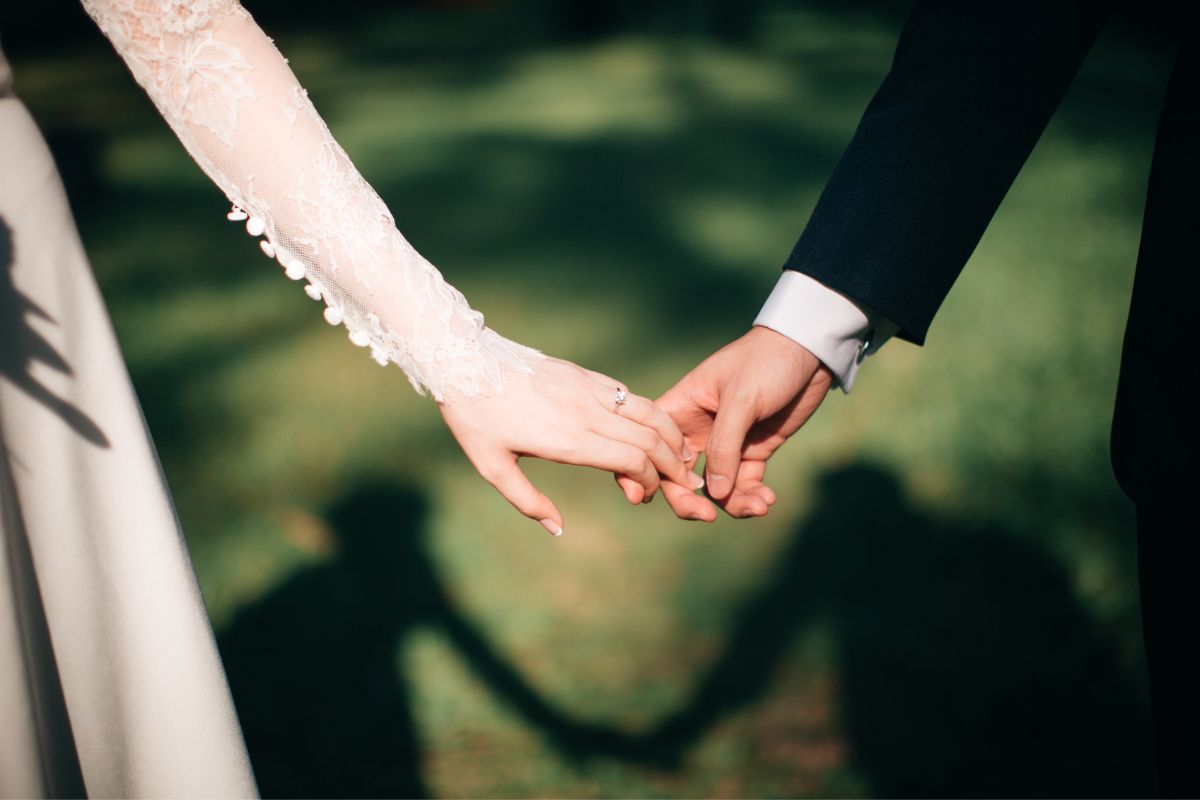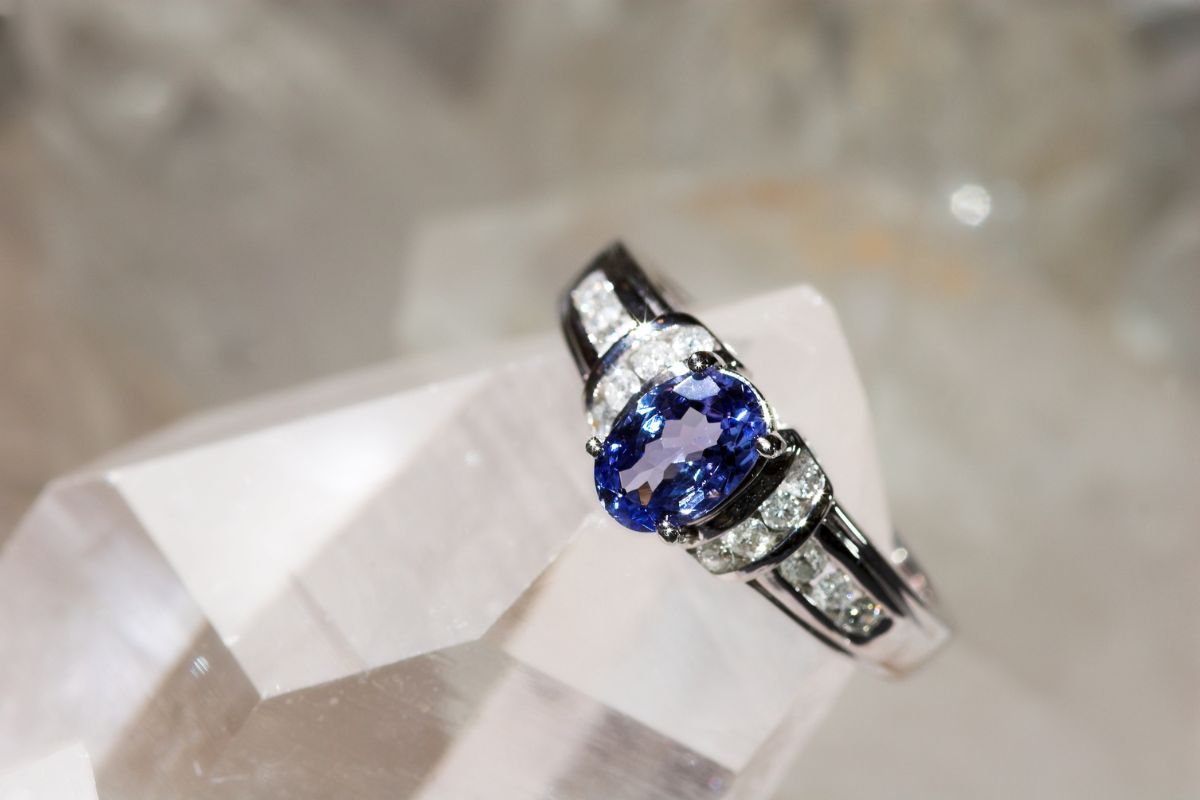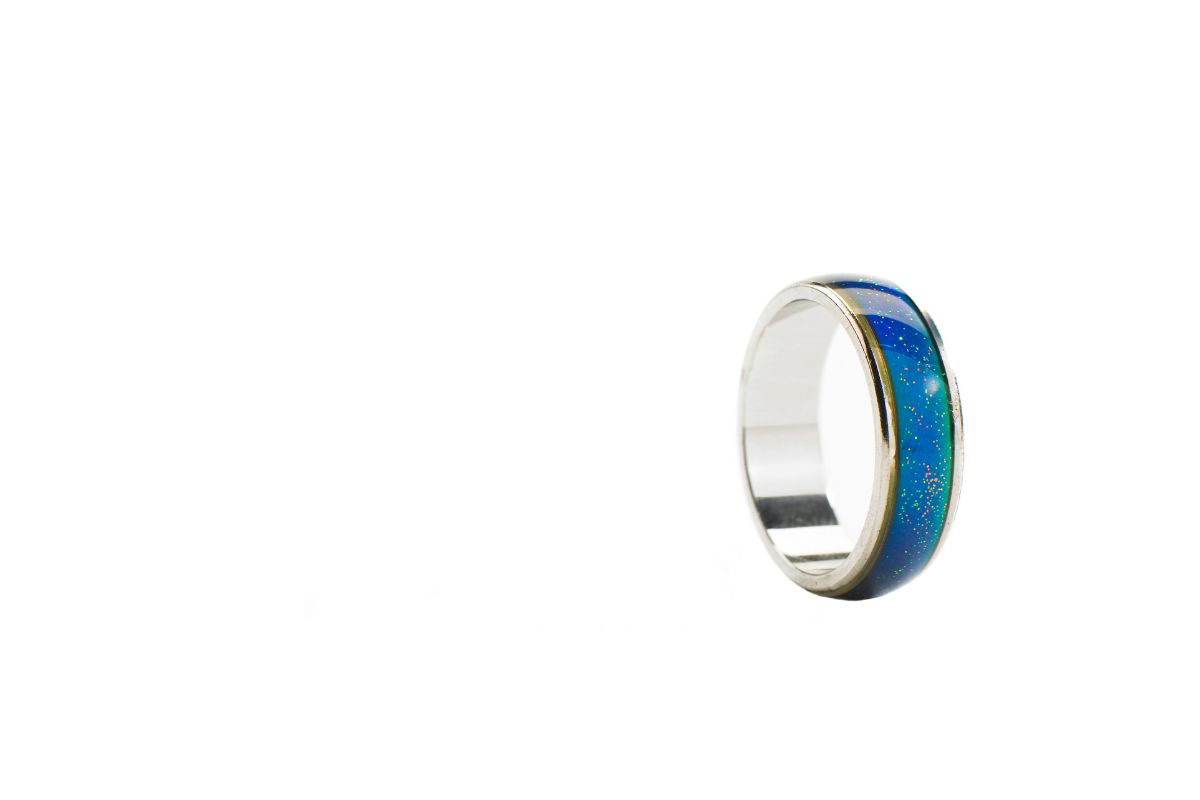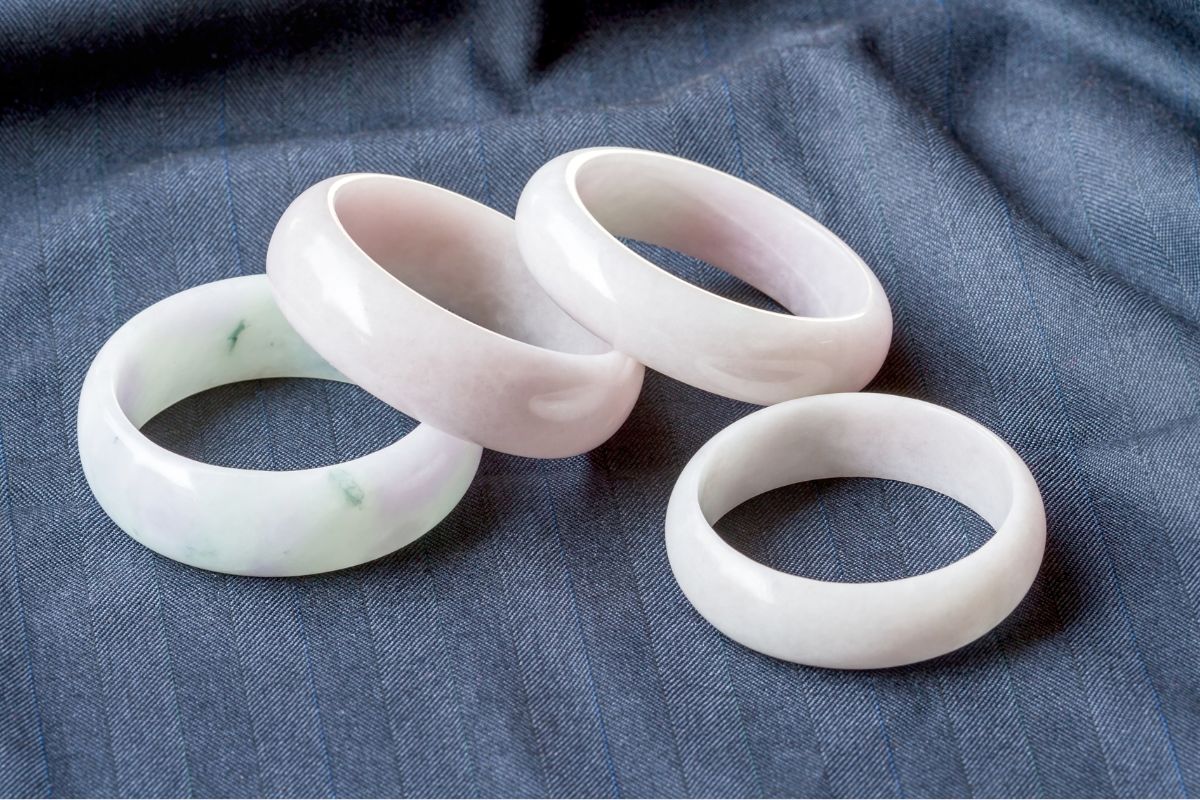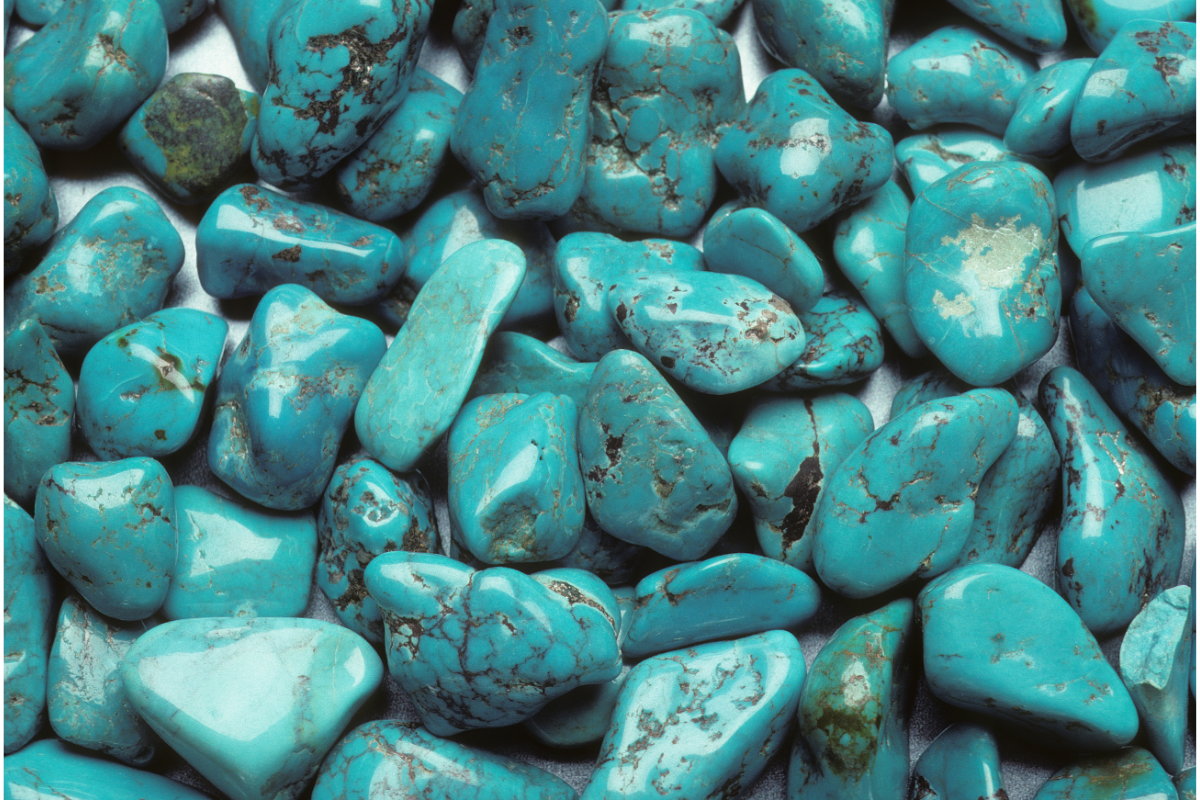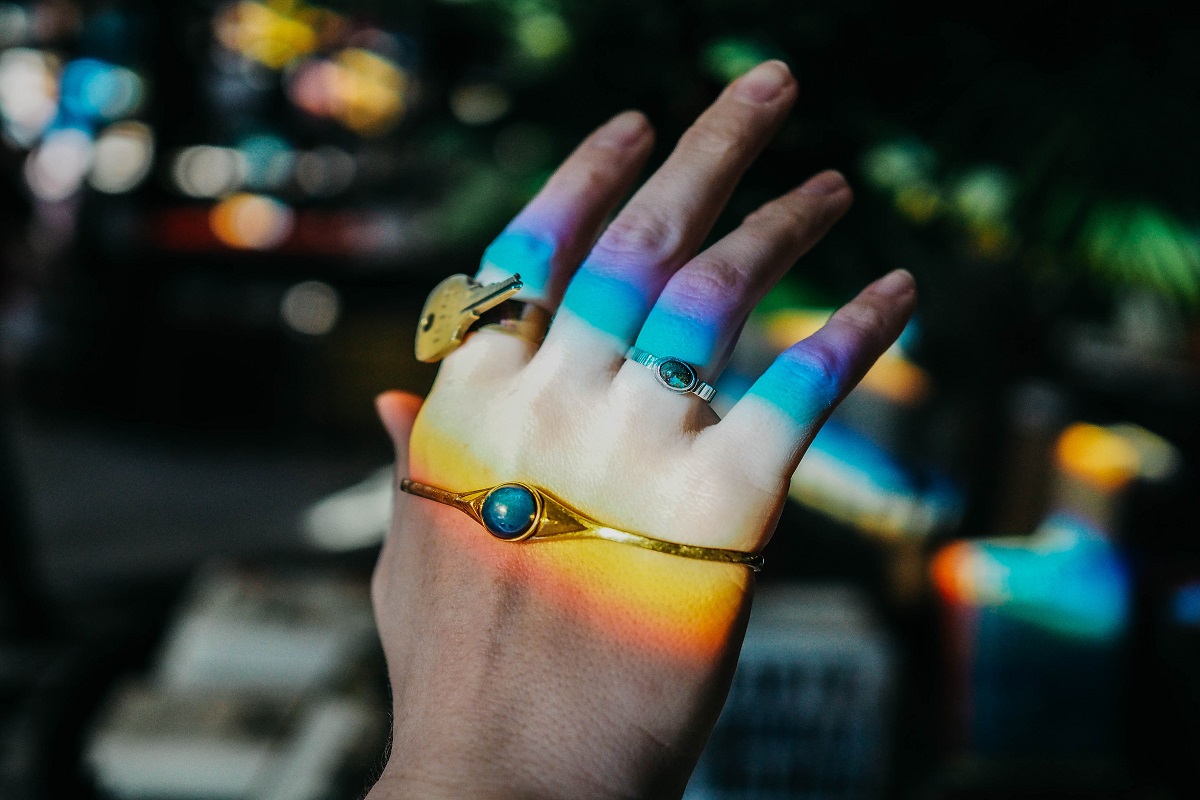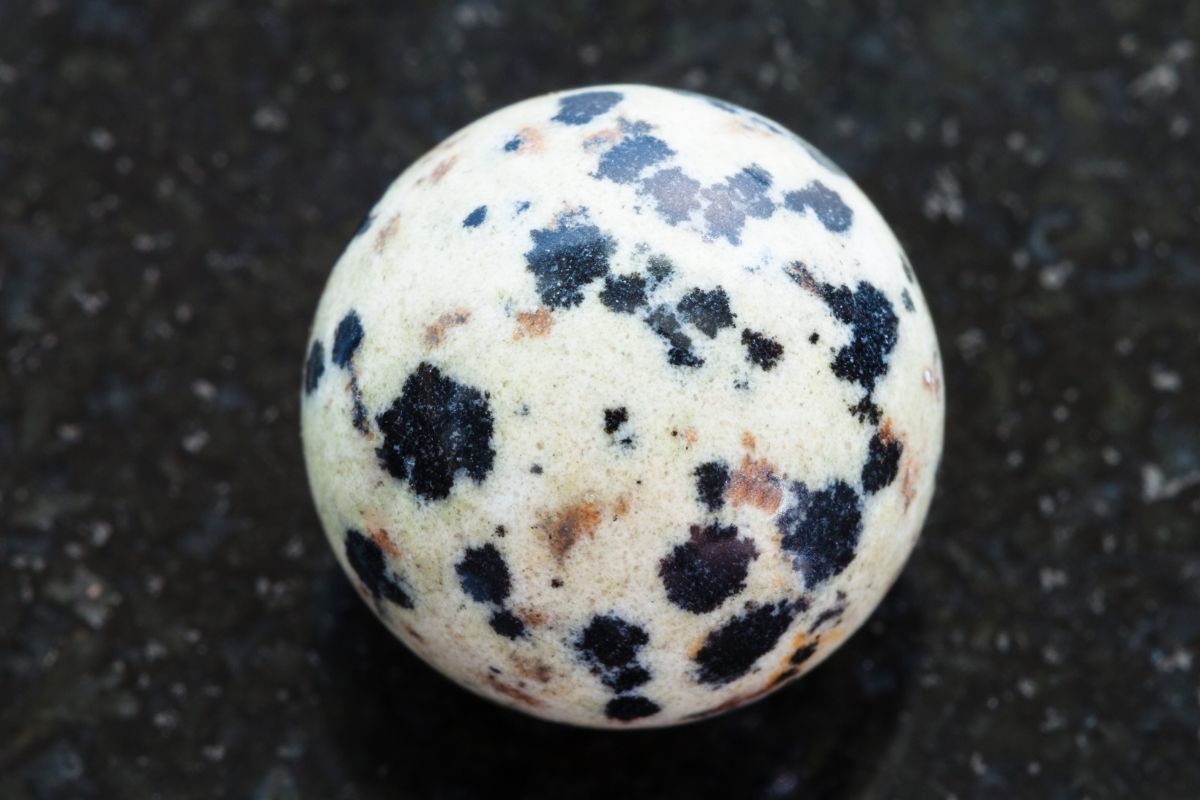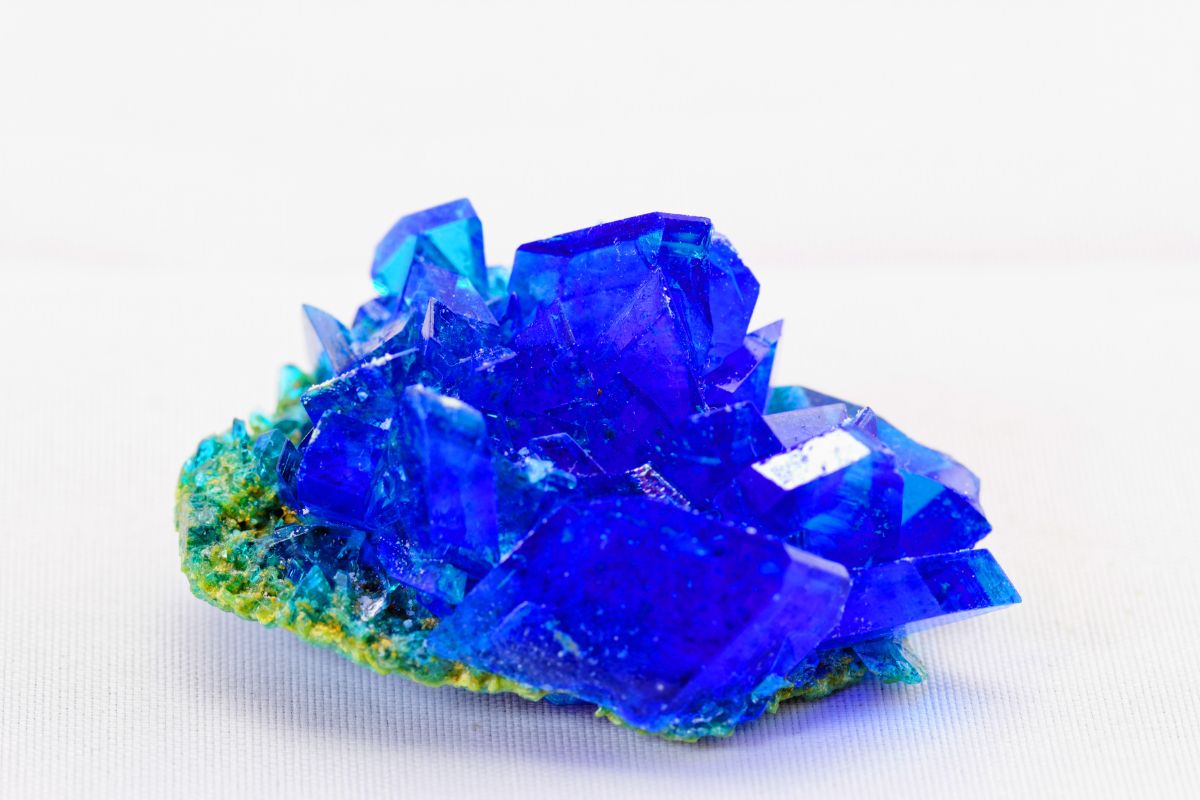I was obsessed with mood rings when I was a child (I kind of still am). The way they utilize temperature to hint at mood seemed like the perfect marriage of science and the supernatural — A little bit of magic we could wear on our fingers!
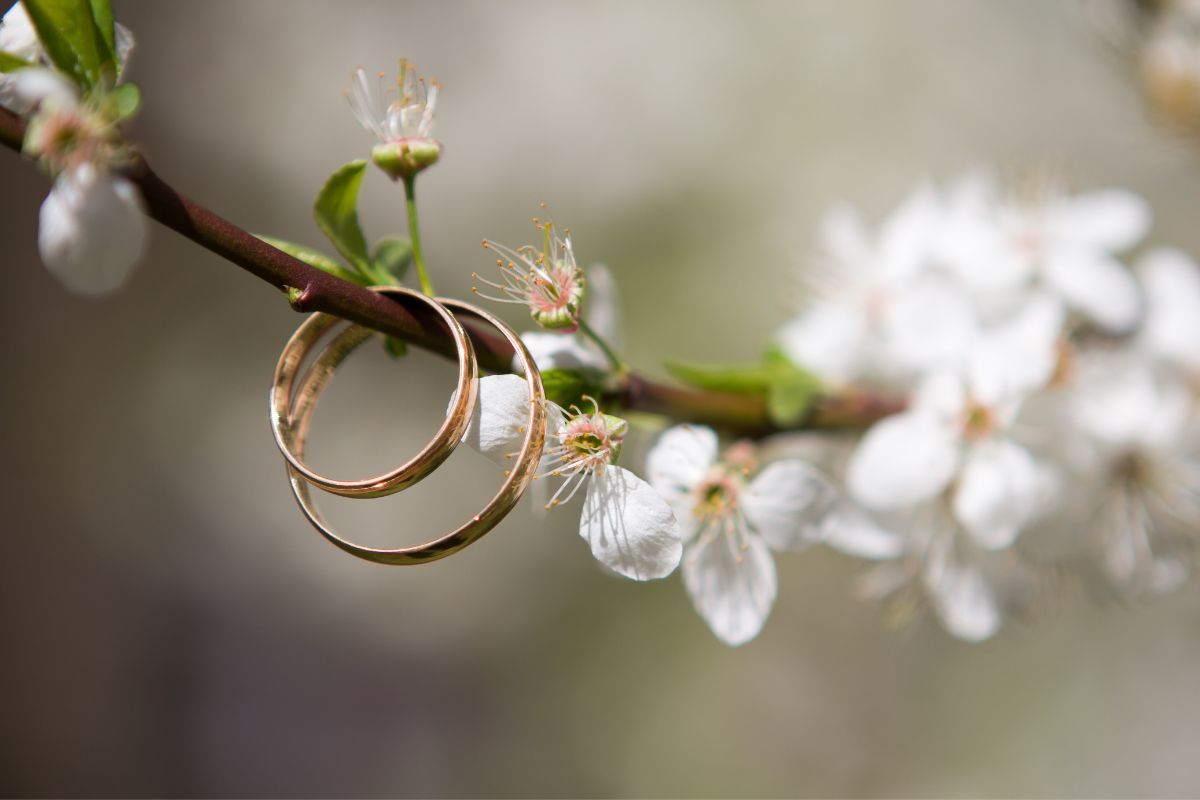
Yet, despite everyone’s fascination with these chameleonic pieces of jewelry, we never really learned what the colors meant in terms of what the wearer was feeling, so I did some digging recently and being that my favorite color is green, that’s the one I started with. Here’s what I discovered.
How Do Mood Rings Work?
To uncover the mystery of a mood ring’s green hue, we need to talk a little bit about how mood rings actually work. In essence, mood stones are just thermometers shaped to fit on your finger.
The bands are made of traditional jewelry materials while set within these bands are rings of thermochromic liquid crystals.
There are a bunch of different types of thermochromic liquid crystals, but the ones most commonly used in mood rings is an organic polymer that’s kind of like synthesized cholesterol.
The rod-shaped crystals within this organic polymer are constantly shifting between two phases based on temperature.
One is known as the nematic phase, which is the warm phase. The other is known as the smectic phase, which – you’ve guessed it – is the cold phase.
When the nematic phase is initiated by warmth, the crystal rods face the same direction, but their general formation is pretty chaotic. By contrast, in the smectic phase, the crystals fall into place like a well-organized army.
This shifting between phases is what causes the change in color, as it alters the way light passes through and reflects from the thermochromic liquid crystals.
Thus, when the wearer’s temperature changes, the crystals start to fidget, and the hue of the ring shifts.
So What Does Green Mean On A Mood Ring?
Did you ever notice that your mood ring was green or greeny-blue for most of the day? Well, there’s a reason for that. Green is the product of thermochromic crystal orientation at average temperature.
So, when you’re going about your day, at work, school, or just getting on with a few things on a weekend, your ring should almost always be green.
It means you’re active and alert but not under stress. You could even be feeling very relaxed, but as you’re moving around and your blood is pumping, you’re triggering a green response.
What Are The Emotional Implications Of Green On A Mood Ring?
I hate to disappoint you, but green is a little bit boring in terms of corresponding emotions.
As the color is tied to average temperature, it doesn’t correspond with any emotions strong enough to trigger a physical thermal response in your body.
If your mood ring is green, there’s a good chance you’re feeling pretty centered and level-headed. You’re not anxious or impassioned, nor are you sad or scared; you just… are.
However, as uninteresting as this may sound, it’s actually a very healthy way to be. You should take it as a sign that you’re in control of things and, presently, you are in perfect equilibrium with the world around you.
Exceptions To The Green Rule
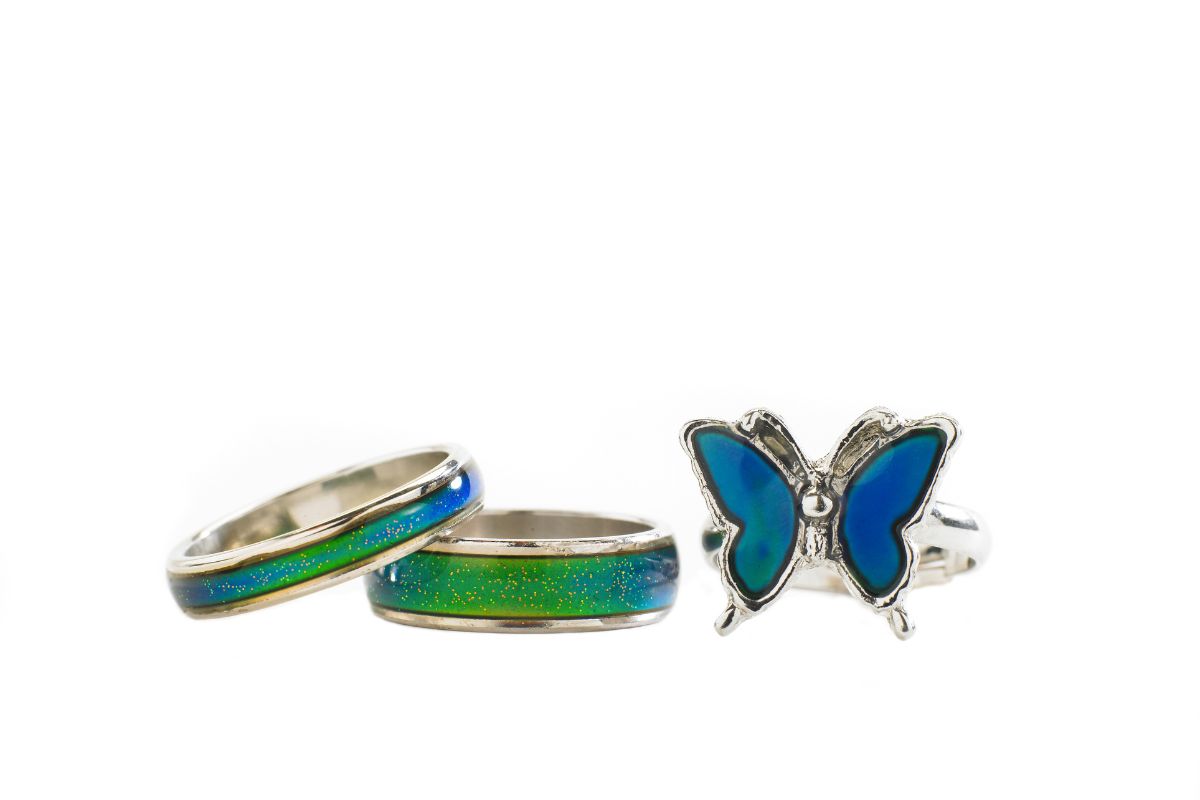
Okay, so what if your mood ring is green, but you’re not active at all? In fact, you’ve been sedentary for a while. Well, normally, blue is an indicator of calm.
It corresponds with that slightly higher temperature that we feel when we’re getting cozy, but if you’re feeling some rather big emotions whilst inactive, there’s a good chance your ring could be green instead of, say, amber (anxious) or yellow (unhappy).
That Doesn’t Match Up With The Color Chart That Came With My Ring
Don’t worry if this information doesn’t reinforce what the color chart that came with your ring is saying, as these are often highly inaccurate or completely made up by the manufacturer.
Another reason my information might not match up with your color chart is that most mood rings are going to behave in slightly different ways, and not just because different thermochromic liquids may be used, but because of the other materials used.
Some mood rings will be coated with a tinted dome that changes the color of the light bouncing back off the crystals, so even though the crystals may be showing green, they might appear blue.
And finally, we all run at different temperatures. What’s a normal temperature for me might be way cooler or warmer than a normal temperature for you, so don’t take too much stock in that color chart of yours.
For the reasons listed above, a much better way to get a feel for which colors correspond with which emotions is to keep a mood diary.
Whenever your ring turns green, note down how you are feeling in this diary. Any patterns should start to emerge after a week or so.
The Failings Of Mood Rings
As fantastic as mood rings are (see also ‘What Does Pink Mean On A Mood Ring?‘), they’re not exactly perfect designs. As thermometers, they’re influenced by any thermo-interference, whether it comes from our bodies or not.
And being that our body heat has to pass through metal to reach the thermochromic liquid, the crystals are much more likely to be impacted by ambient temperature.
What’s more, our thermals are far more reactive to thermal temperature than our emotions, so green may only indicate that we’ve got that thermostat at just the right temp.
Final Thoughts
Mood rings may not be quite as magical as we thought when we were growing up, but they can still tell us and others a lot about how we’re feeling, especially if we keep a feelings journal that maps our emotions in relation to the colors of the ring at different times.
A good quality mood ring can be remarkably beautiful as well, giving us clues to our inner selves whilst beautifying our outer selves, so there’s really no reason not to enjoy them, even as adults!
- 15 Crystals That Cannot Be Exposed To The Sun - January 7, 2024
- Malachite Vs Fuchsite – Benefits And Uses - January 7, 2024
- Malachite Vs. Green Jasper: Benefits And Uses - January 7, 2024

